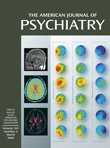To the Editor: Our response to Dr. Clayton’s letter is organized around three ideas: the limitations of diagnostic constructs, individual differences, and functional significance. Rather than seeing our subjects as having typical cases of acute stress disorder or PTSD, we emphasize that these diagnostic constructs do not adequately address the individual differences they exhibited, both subjectively and biologically, nor the functional significance of their responses.
Dissociation is used to describe a diversity of peritraumatic and posttraumatic phenomena, including emotional numbing, freezing, depersonalization, and amnesia. There are likely significant individual differences in dissociative posttraumatic symptoms among those with PTSD, and the biological bases of these phenomena are not well understood.
Indeed, the woman in our report exhibited predominantly numbing and freezing dissociative symptoms during the trauma, during the immediate aftermath, and while reliving it during script-driven imagery. Her functional magnetic resonance imaging findings were different from those we found in a study of dissociative responses to script-driven imagery in subjects with chronic PTSD who had high scores on the Dissociative Experiences Scale and significant depersonalization symptoms
(1).
Individual differences are not unique to dissociative phenomena in PTSD. Blood-oxygen-level-dependent activations exhibited by the husband, who did not dissociate but described arousal and had a dramatically increased heart rate, were different from those of chronic “hyperaroused” PTSD subjects in our previous study
(2) in two key structures: the anterior cingulate cortex and the thalamus.
The issue of functional significance may shed light on these issues. The wife’s peritraumatic and later relived dissociative response involved feeling not only emotionally numb but, as she put it, “I could hardly move because I was completely frozen.” The functional significance of a state of emotional numbness and subjectively experienced paralysis is quite different from that of a dissociated state involving significant depersonalization and an “auto-pilot” active escape mode. It should not be surprising that her brain activation pattern was different from that of the subjects with chronic PTSD with significant depersonalization symptoms. Similarly, the husband’s hyperaroused state involved intensive and deliberative planning and escape cognitions, and his brain activations appeared consistent with those functionally significant activities. Of interest, studies in animals suggest that the heart rate decreases when partially restrained rats are exposed to conditioned fear stimuli
(3) but increases in unrestrained rats
(4).
Diagnostic categories are necessary, as are studies on relationships between the diagnostic categories of acute stress disorder and PTSD and whether these should be modified, retained, or combined (Brewin et al., 2003; reference
5). However, work on individual differences and case reports that illuminate the functional significance of specific symptomatic responses and their biological bases also advance our understanding of posttraumatic symptoms. Such work illustrates the heterogeneity of responses in PTSD and supports the notion of Foa and colleagues
(6) that different PTSD symptoms, such as intense hyperarousal or numbing, may represent distinct pathological processes. Grouping PTSD subjects with different symptom patterns within the same diagnostic category can hinder our understanding of posttraumatic psychopathology. The heterogeneity of responses in PTSD may therefore shed light on the complexities of diagnosing and treating acute and enduring posttraumatic syndromes. We thank Dr. Clayton for raising important questions that gave us an opportunity to address these issues further.

